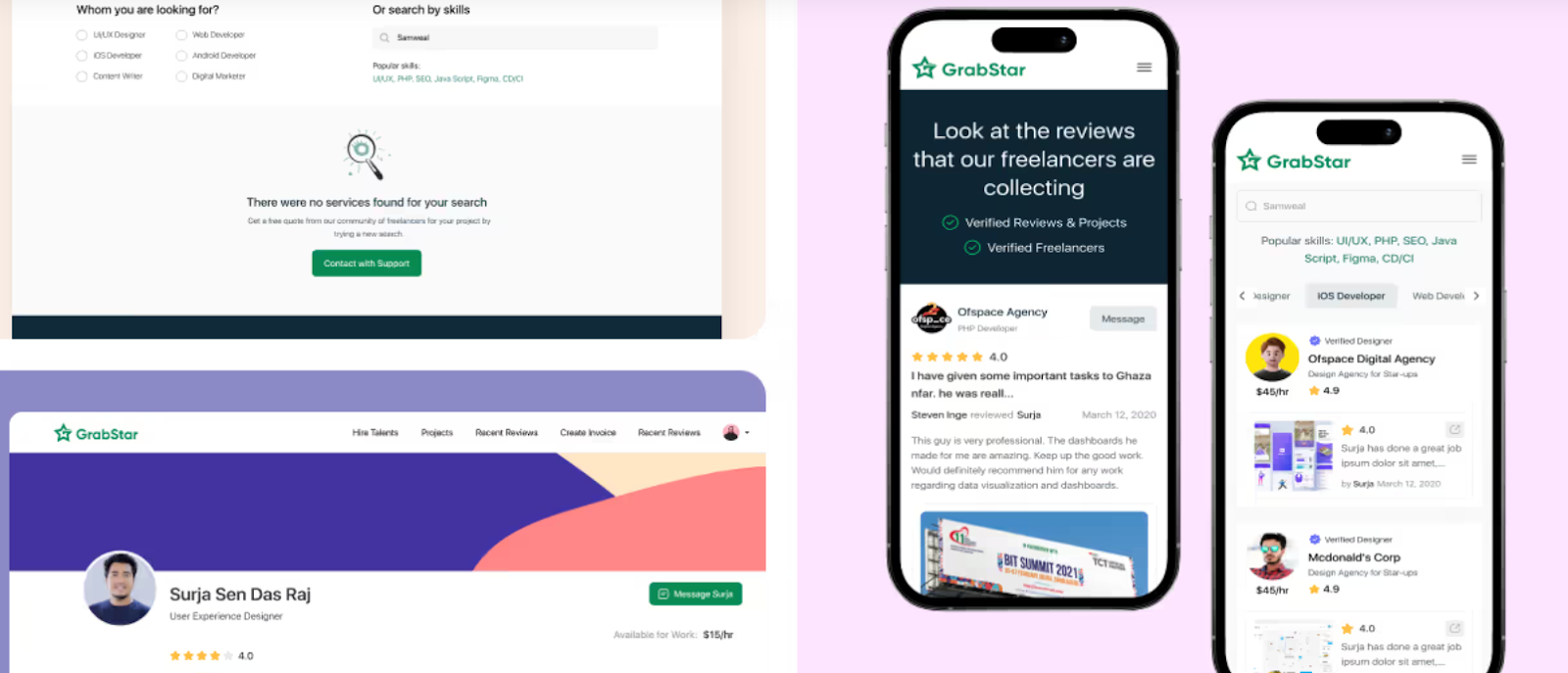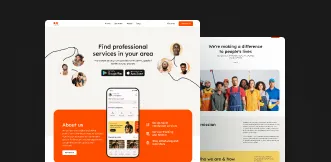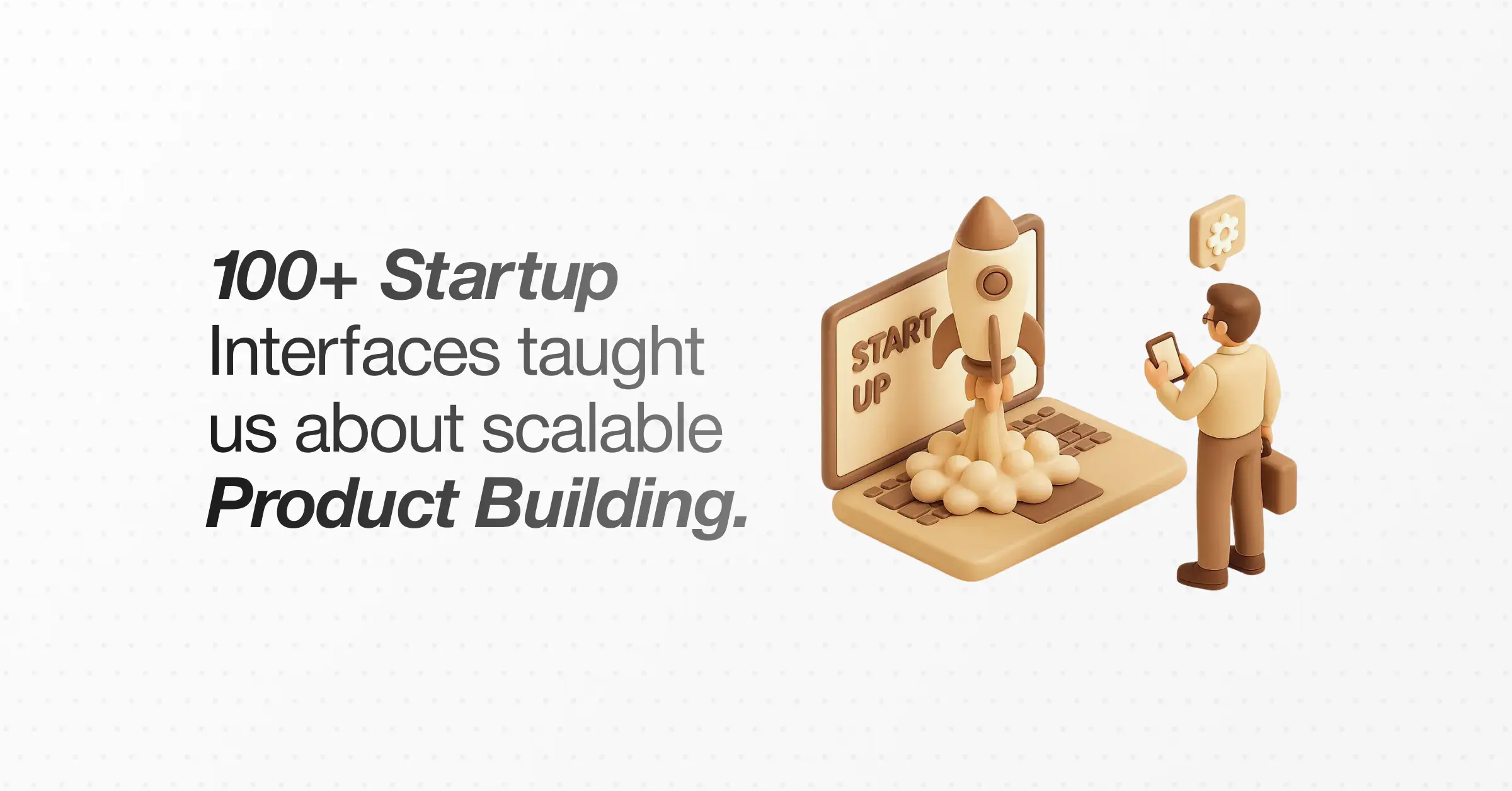Design
6 Signs Your Startup Needs a Website Redesign Today
October 13, 2025
February 24, 2025

Your product may be innovative, your team ambitious, and your vision clear, but if your website doesn’t reflect that, you’re losing momentum.
For most startups, the website is the first place investors, customers, and potential partners evaluate your credibility.
An outdated, slow, or confusing site can undermine trust and cost real opportunities.
A strategic website redesign helps fix that. It strengthens your brand identity, improves user experience, and turns visitors into customers.
It’s not just a visual upgrade; it’s a growth investment that directly impacts conversions, traffic, and perception.
Let’s look at the signs your website needs a redesign and how improving it can accelerate your startup’s success.
Signs It's Time to Redesign Your Website (The Start-Up Red Flags)
If you’re questioning whether your startup needs a redesign, you probably already do.
The real question is how soon you should start.
Here are the clearest signals your website is limiting growth and needs attention now:
1. Your Website Looks Outdated
An outdated interface makes your brand look unprofessional and out of touch.
Modern users expect clean layouts, consistent typography, and intuitive interaction.
If your site still looks like it was built years ago, it’s working against your credibility.
How To Verify
Check Dribbble and Behance trends, consult experts, and test your site with BrowserStack.
2. Poor User Experience
A poor user experience signals visitors might get lost or frustrated on your site.
A redesign can streamline navigation and enhance usability.
How To Verify
Verify this using Hotjar or Crazy Egg for heatmaps and SurveyMonkey for direct feedback.

3. Page Speed is Killing You
If your website is slow, you’re losing customers. 40% of users abandon a site that takes more than 3 seconds to load.
That’s 40% of your potential revenue gone.
How To Verify
Use Google PageSpeed Insights to check site speed and optimize images, scripts, and server performance.
.webp)
4. Your Conversion Rate is Low
If visitors are bouncing without converting, something is wrong. Maybe it’s poor CTAs or confusing navigation.
Redesigning your website with clear goals in mind can help you turn visitors into customers.
How To Verify
Use Google Analytics to track conversions and Optimizely for A/B testing to find designs and CTAs that drive results.
5. You’re Not Mobile-Optimized
More than half of web traffic comes from mobile devices, and that number is only growing.
If your site isn’t responsive, you’re leaving money on the table.
How To Verify
Use Google's Mobile-Friendly Test to check mobile performance and ensure responsive design across all devices.
6. Poor SEO Performance
Poor SEO performance can limit your site's visibility and reduce organic traffic.
If your website isn't ranking well in search results, a redesign that follows current SEO best practices can significantly improve its performance.
How To Verify
use tools like SEMrush or Ahrefs to conduct a comprehensive SEO audit. These tools help identify broken links, slow loading times, missing meta tags, or poorly optimized headings.
After the audit, you can boost your site's search engine rankings and attract more organic traffic.
.webp)
Why a Website Redesign Will Change Everything for Your Startup

A website redesign is about creating an experience that converts, builds trust, and drives growth. If you're also developing a new product, working with the Best Product Design Agency ensures your website and product are aligned for maximum impact
1. Brand Identity That Speaks
Startups evolve quickly, but many websites stay stuck at launch. A redesign lets your brand reflect who you are today, not who you were in early development.
Clear visuals, strong messaging, and consistent tone help your startup look professional and ready to scale.
2. Better User Experience, Stronger Engagement
Visitors decide in seconds whether to stay or leave. A redesigned site with intuitive navigation, fast load times, and focused layouts keeps users engaged and drives them toward action.
3. SEO That Builds Organic Growth
A new design can also mean a better opportunity for SEO improvements. Google loves fast, mobile-friendly, and well-structured sites.
A redesigned website gives you a fresh chance to rank higher in search results, driving more organic traffic.
4. Higher Conversions Through Clarity
By optimizing design elements like CTAs, landing pages, and overall navigation, you can significantly boost your conversion rate. Studies show that well-designed landing pages can increase conversions by up to 200%.
5. Attracting More Traffic and Social Shares
A modern website redesign makes your site more visually appealing and share-worthy, boosting social media shares, increasing traffic, and expanding your brand’s reach.
6. Building Trust and Credibility
A clean, user-friendly design builds trust and shows credibility. Keeping your site secure and up-to-date boosts customer confidence, leading to loyalty and more conversions.
How to Redesign Your Website for Success (Step-by-Step)
Ready to get started? Here’s a roadmap for a successful website redesign:
Step 1: Audit Your Current Website
Look at performance metrics like traffic, bounce rates, and conversion rates. Tools like Google Analytics and Hotjar will provide valuable insights into where users drop off.
Step 2: Define Clear Goals
Decide what your redesign should achieve. Do you need stronger branding, better conversions, or improved usability? Define measurable outcomes for each goal, such as reducing bounce rate or increasing form submissions.
Are you redesigning for better brand alignment, more conversions, or an improved user experience? Define your goals upfront so that every change serves a purpose.
Step 3: Choose the Right Team
Whether it’s an in-house team or an agency, make sure the team you hire understands your startup’s needs.
Partnering with the Best Product Design Agency can help you build a website that not only looks great but also enhances user experience and drives conversions.
For more details read- How to Redesign a Website (A 15-Step Guide for Success).
Key Features to Include in Your Website Redesign
Make sure your redesigned website includes these must-have features:
1. Speed Optimization
Fast load times keep users engaged and improve SEO. Compress images, enable caching, and use lightweight code.
Every second counts, even small speed gains can reduce bounce rates and increase conversions.
2. Mobile Responsiveness
Ensure your site design looks modern and works perfectly across all devices. Over half of all internet traffic comes from mobile devices.
3. Optimized CTAs
Your website should have clear, compelling CTAs that prompt users to act. Test different placements and designs to see what works best.
4. SEO Best Practices
Ensure your redesigned website is optimized for search engines. This includes keyword optimization, fast load times, and mobile optimization.
Common Pitfalls to Avoid During a Website Redesign
While a redesign can do wonders, there are some common mistakes to avoid:
1. Focusing Only on Aesthetics
A stunning website is great, but functionality is key. A website that’s beautiful but hard to navigate won’t do you any good.
2. Neglecting User Feedback
Before launching your redesign, test it with real users. Feedback is invaluable, and it will help you refine the design.
3. Overcomplicating Design
Keep it simple! Too many features or clutter can confuse visitors. A clean, easy-to-navigate website will keep people engaged.
Startups That Successfully Redesigned Their Websites (Case Study)
Example 1: GrabStar
GrabStar rebranded and redesigned its website with a focus on mobile-friendliness and user-centric design. The result was a significant boost in website traffic and a noticeable increase in conversions within just 2 months.

Example 2: C-Teleport
C Teleport startup rebranded and redesigned its website to be more mobile-friendly and user-centric. As a result, traffic increased by 60% and conversions jumped by 30% within just three months.

Example 3: Wokka
After redesigning wokka’s website to focus on customer testimonials and streamlined CTAs, a real-estate startup saw their bounce rate drop by 40% and user engagement soared.

Check out how real-work websites transformed their businesses by visiting their revamped sites.
Frequently Asked Question
1. What are the effects of a website redesign?
A website redesign can boost revenue, reduce bounce rates, and improve user experience (UX) by updating the code, content, structure, and visuals.
2. Why is revamping a website important?
It keeps your site optimized for search engines, enhances performance, and ensures content stays relevant for visitors.
3. Will a website redesign affect SEO?
Yes. A well-executed redesign can improve rankings and organic traffic. However, mishandling elements like URL structures or content without proper redirects can hurt SEO.
4. What factors affect the cost of a website redesign?
Costs depend on complexity, customization, technology, and content needs. Extras like SEO, e-commerce features, and maintenance can increase the price.
5. Website redesign vs. website refresh: What’s the difference?
A redesign is a full overhaul of structure, visuals, and functionality. A refresh focuses on updating design and content while keeping the core structure intact.
Get Started on Your Website Redesign Today
A website redesign is one of the smartest investments you can make for your startup. Whether it’s improving your SEO, boosting conversions, or strengthening your brand, the benefits are undeniable.
Don’t wait for your website to fail you—take the leap and revamp your site today. Ofspace specializes in helping startups redesign their websites to be fast, user-friendly, and optimized for conversions.
Contact us now for a 15-min free consultation and let’s make your website work harder for you.






